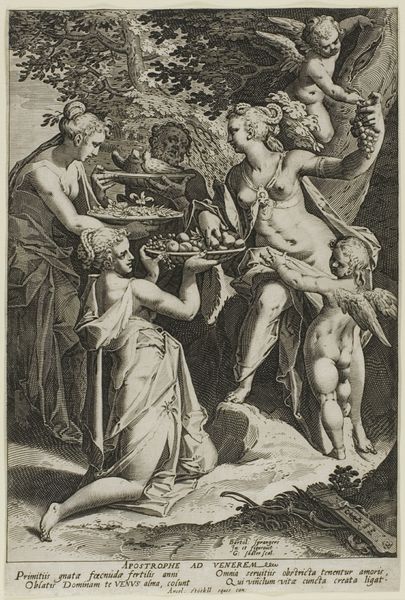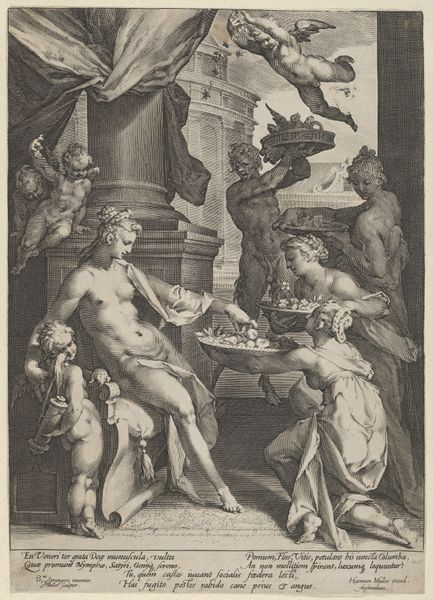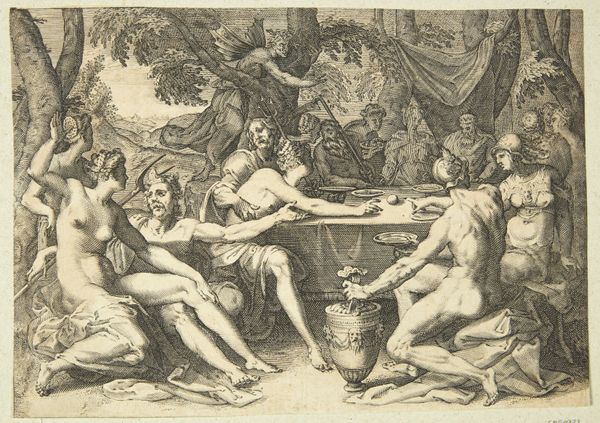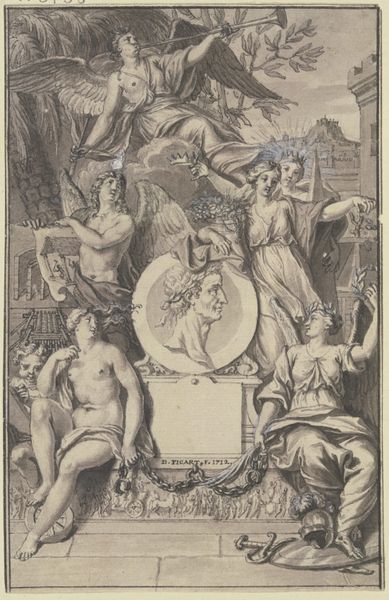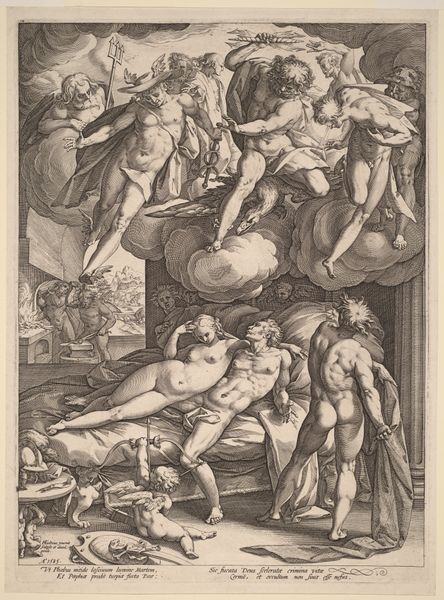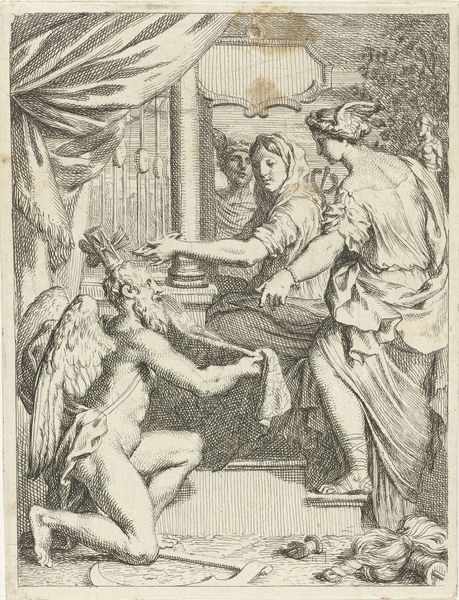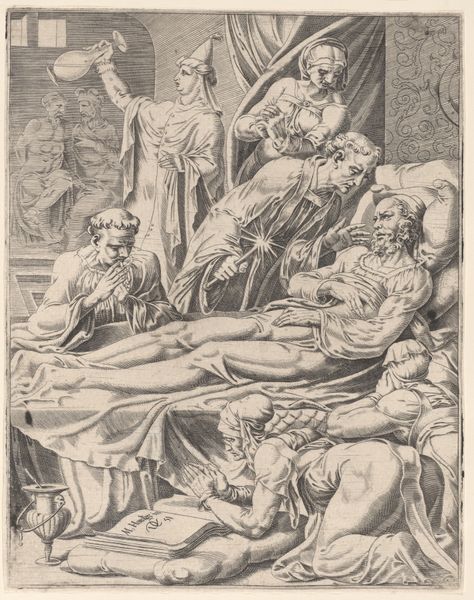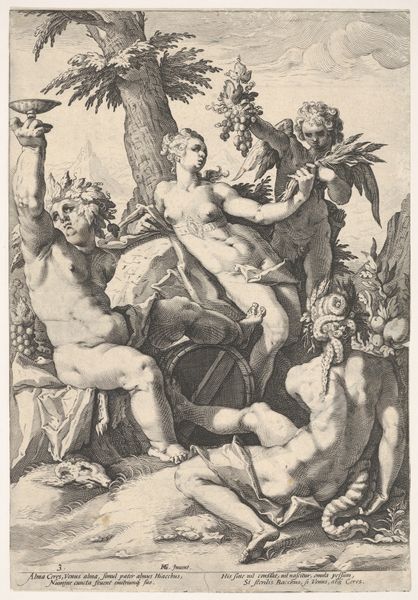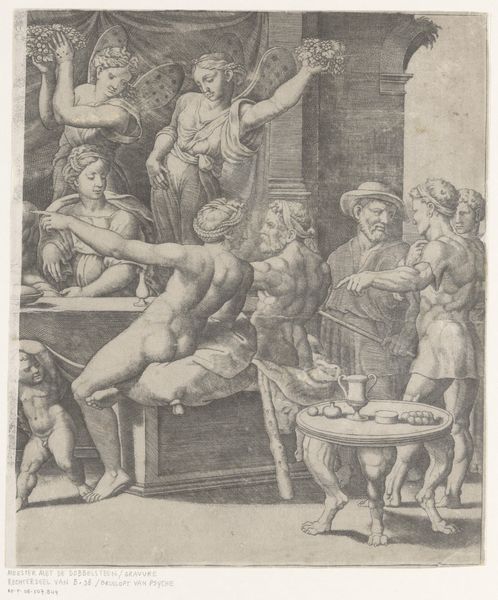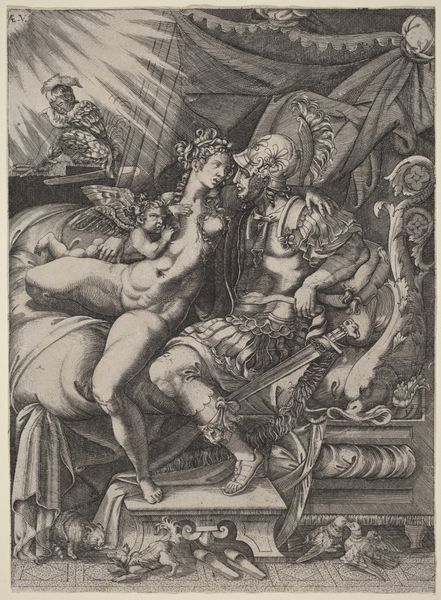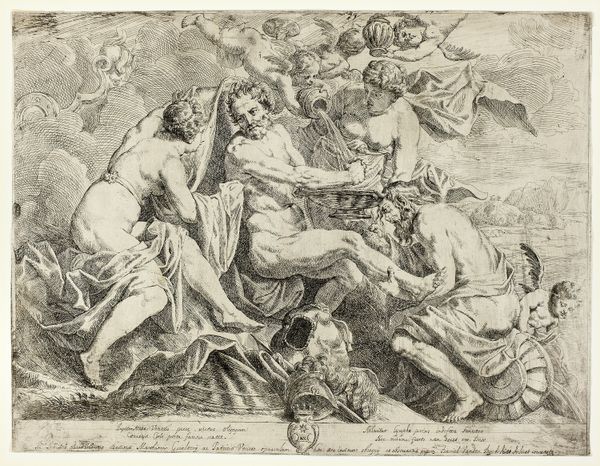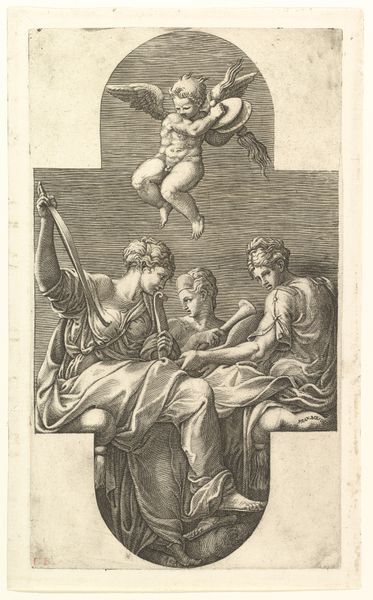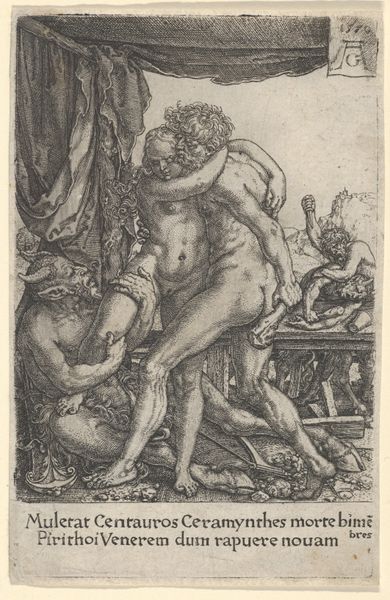
drawing, print, engraving
#
portrait
#
drawing
#
allegory
# print
#
old engraving style
#
classical-realism
#
mannerism
#
figuration
#
11_renaissance
#
history-painting
#
nude
#
engraving
Dimensions: Sheet: 11 1/8 × 7 3/8 in. (28.3 × 18.8 cm)
Copyright: Public Domain
Curator: Aegidius Sadeler II created this engraving, "Venus Receiving Gifts," sometime between 1586 and 1601. Look closely; what's your initial reaction? Editor: It feels bountiful, but with an odd, almost clinical stillness. The detail is incredible, like peering into a miniature world, but something about the presentation of the figures—all this...flesh—feels posed, not quite alive. Curator: Let's consider the materiality of a print like this. Engravings like this were instrumental in disseminating imagery throughout Europe. It's not just an artwork; it’s a technology for sharing ideas about beauty, mythology, and even political power. Note the inscription at the bottom. It tells us a lot about its reception at the time. Editor: Right, the text dedicates this "fertile year" to Venus, implying some hope for...well, propagation. It feels like they are appealing to Venus. It's that almost scientific quality that contrasts with the abundance of gifts presented. It looks to me more like a transaction than sincere adoration, do you see what I mean? Curator: In Mannerism, the style of the piece, the goal wasn’t necessarily naturalism. It’s about artifice, skill, and conveying complex allegorical ideas. The figures are idealized types, meant to evoke a sense of classical grandeur adapted to contemporary, often courtly, contexts. We see that classical reference right here in the chosen subject matter. Editor: I can see that. Thinking of it less as a mirror reflecting nature, and more like a stage set. It makes sense of that slightly unsettling feeling, that almost overwhelming display of detail. It is fascinating how they combined the religious themes of the time with Greek mythological themes. This, itself, says something of their desires. Curator: Exactly. These prints acted as both artworks in their own right and as crucial tools within artistic workshops for studying composition and form. Their production, distribution, and reception involved a complex network of workshops, patrons, and consumers, reflecting the changing economics of art at the time. Editor: I will probably go back and consider that "clinical stillness" I noticed at the beginning. There is a precision and almost scientific quality to this piece that does make it unique. The experience changed me and now that element that bothered me feels compelling, intentional.
Comments
No comments
Be the first to comment and join the conversation on the ultimate creative platform.
